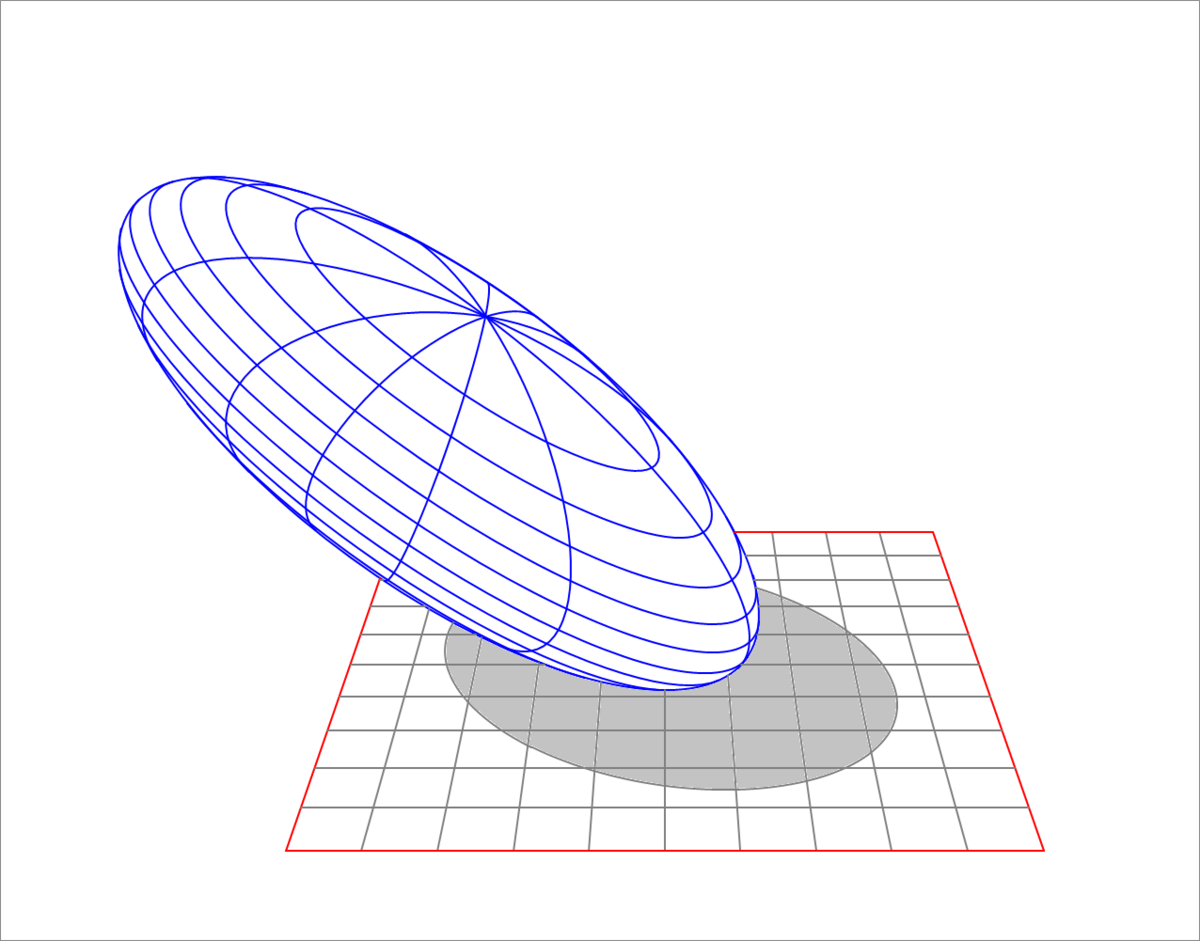Minimum Shadow Area

An ellipsoid has its first semi-axis of length 15 units along the unit vector u 1 = 9 1 ( 8 , − 4 , 1 ) , and its second semi-axis of length 30, along the unit vector u 2 = 9 1 ( 4 , 7 , − 4 ) , and its third semi-axis of length 10 along the unit vector u 3 = 9 1 ( 1 , 4 , 8 ) . It is positioned such that it touches the x y plane at the origin (that is, all of the ellipsoid lies above the x y plane, except for one point, the origin). The ellipsoid is subjected to uniform direction light (like sun rays) that produces a shadow of the ellipsoid on the x y plane. By varying the direction of the light rays, find the minimum possible area of that shadow.
Note: In a previous problem it was shown that there is a closed form expression for the shadow area and it is given by
A = π ∣ Q e ∣ ∣ n T d 0 ∣ d 0 T Q e d 0
where d 0 is the unit direction vector of the light rays, n is the normal to the projection plane, and where the ellipsoid equation is given by ( r − r 0 ) T Q e ( r − r 0 ) = 1 .
The answer is 877.4793.
This section requires Javascript.
You are seeing this because something didn't load right. We suggest you, (a) try
refreshing the page, (b) enabling javascript if it is disabled on your browser and,
finally, (c)
loading the
non-javascript version of this page
. We're sorry about the hassle.
0 solutions
No explanations have been posted yet. Check back later!